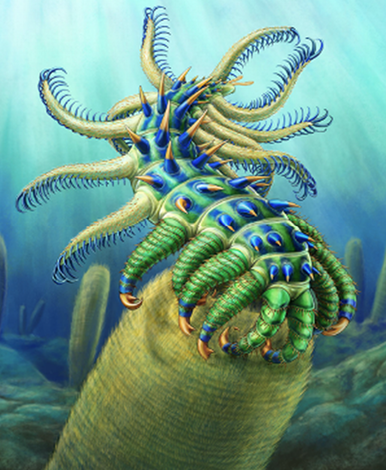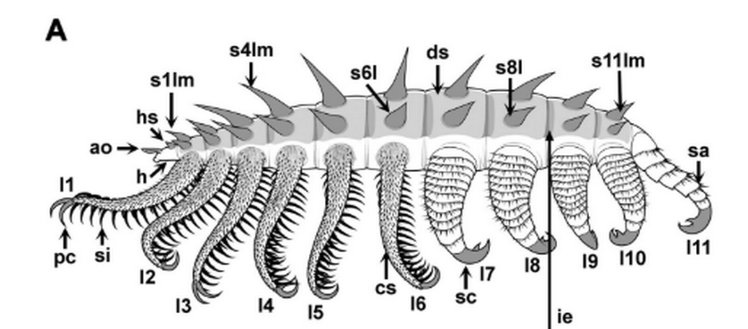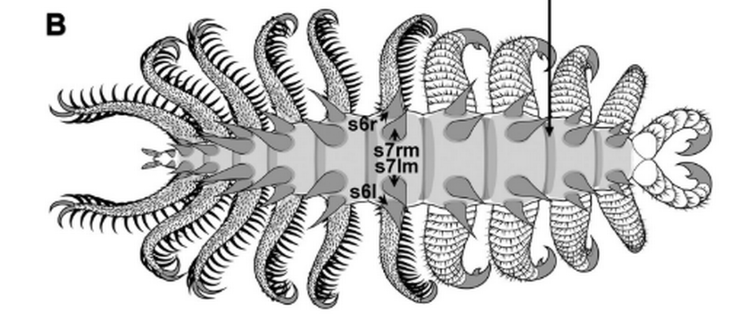||| FROM THE MIAMI HERALD |||

Entothyreos synnaustrus, a spined animal with stubby clawed legs and flailing appendages.
More than 500 million years ago, something in the ocean changed.
Some creatures evolved to build their own hard-shelled exterior. Others grew to sizes never seen before as the amount of oxygen on the planet’s surface finally reached a level high enough for complex creatures to exist.
Most important, for about 10 million years, the number of animals living in the ocean skyrocketed.
It’s called the Cambrian Explosion, and it turned the largest environment on the planet from a vast open sea to a packed ecosystem.
Some of the new species look similar to their modern-day ancestors, but others look like they would be better suited on an alien planet.
One of those is entothyreos synnaustrus, a spined animal with stubby clawed legs and flailing appendages — and it’s a new species.
In 1983, members of the Royal Ontario Museum traveled to the Canadian Rockies and discovered a vast fossil bed in what is now Yoho National Park, according to a study published June 21 in the Journal of Systematic Palaeontology. Since then, roughly 10,000 fossils have been discovered at the site, including a soft-bodied prehistoric ocean creature that looks like a tulip, earning the site its name in 2012, according to the study. More than 50 new species have so far been identified using the fossils found at the Tulip Beds, but other fossils have remained a mystery.
**If you are reading theOrcasonian for free, thank your fellow islanders. If you would like to support theOrcasonian CLICK HERE to set your modestly-priced, voluntary subscription. Otherwise, no worries; we’re happy to share with you.**









